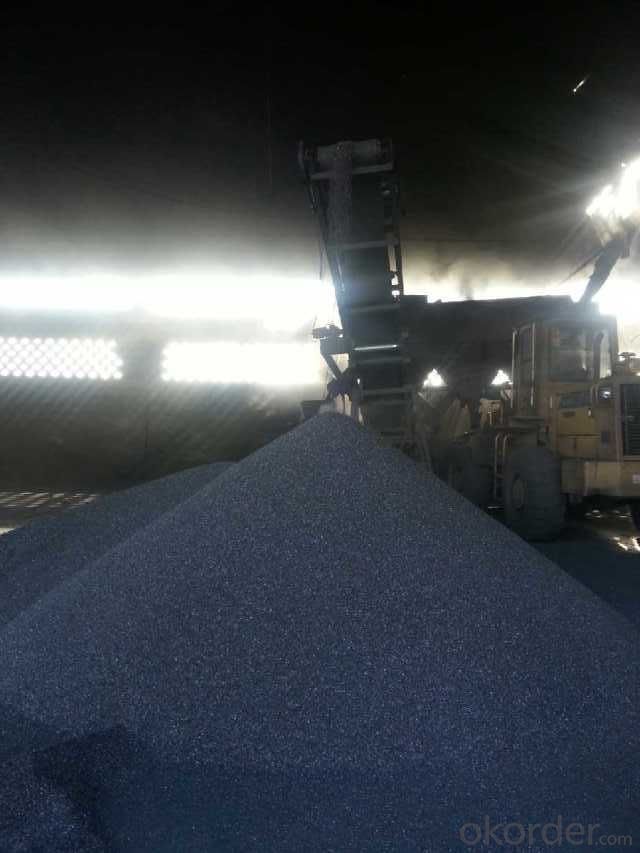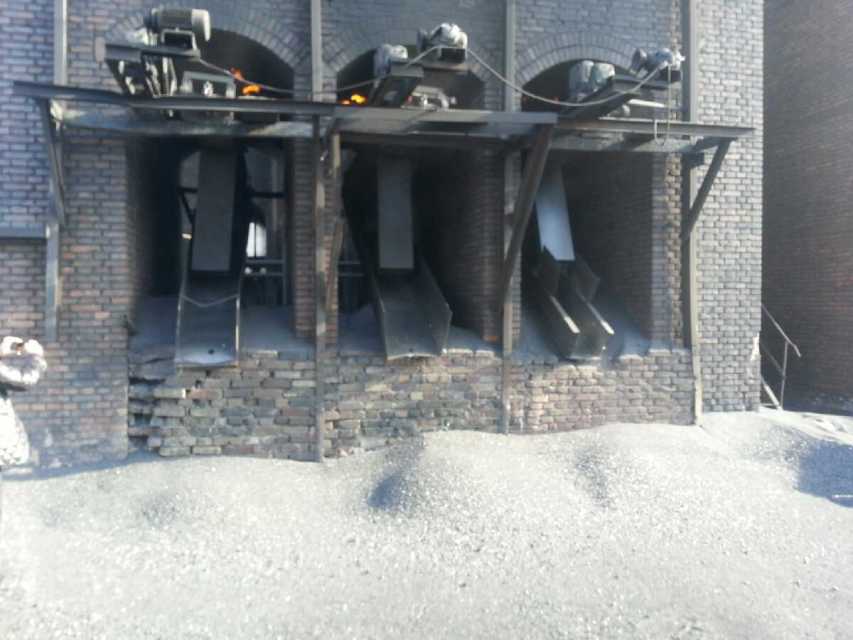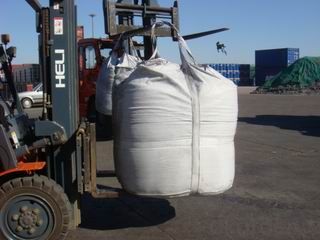Carbon Additive FC 90% CNBM China Product
- Loading Port:
- China main port
- Payment Terms:
- TT OR LC
- Min Order Qty:
- 0 m.t.
- Supply Capability:
- 100000 m.t./month
OKorder Service Pledge
OKorder Financial Service
You Might Also Like
Packaging & Delivery
| Packaging Detail: | 25kgs/50kgs/1ton per bag or as buyer's request |
| Delivery Detail: | Within 20 days after receiving corect L/C |
Specifications
Calcined Anthracite
Fixed carbon: 90%-95%
S: 0.5% max
Size: 0-3. 3-5.3-15 or as request
Calcined Anthracite is produced using the best Anthracite-Taixi Anthracite with low S and P, It is widely used in steel making and casting.
General Specification of Calcined Anthracite:
PARAMETER UNIT GUARANTEE VALUE | |||||
F.C.% | 95MIN | 94MIN | 93MIN | 92MIN | 90MIN |
ASH % | 4MAX | 5MAX | 6MAX | 7MAX | 8MAX |
V.M.% | 1 MAX | 1MAX | 1.5MAX | 1.5MAX | 1.5MAX |
SULFUR % | 0.5MAX | 0.5MAX | 0.5MAX | 0.5MAX | 0.5MAX |
MOISTURE % | 0.5MAX | 0.5MAX | 0.5MAX | 0.5MAX | 0.5MAX |
Size can be adjusted based on buyer's request.
Pictures of Calcined Anthracite:




We can supply below furnace charges, please feel free to contact us if you areinterested in any of any of them:
Coke (Metallurgical, foundry, gas)
Calcined Anthracite with fixed carbon from 90% to 95%
Calcined Petroleum Coke
- Q:What is carbon nanoelectronics?
- The field of research and development known as carbon nanoelectronics focuses on using carbon-based materials, like carbon nanotubes or graphene, to create and advance electronic devices and components on a nanoscale level. These tiny carbon structures have unique electrical properties that make them highly desirable for a wide range of electronic devices, including transistors, sensors, and interconnects. One of the main advantages of carbon nanoelectronics is the exceptional electrical conductivity and thermal properties of carbon nanomaterials. For example, carbon nanotubes have excellent electrical conductivity, comparable to copper, but with a much smaller size. This allows for the creation of smaller and more efficient electronic devices, leading to advancements in miniaturization and energy efficiency. Another important aspect of carbon nanoelectronics is the incredible strength and flexibility of carbon nanomaterials. Graphene and other carbon-based structures have exceptional mechanical properties, making them highly durable and resilient. This makes it possible to produce flexible and wearable electronic devices that can adapt to different surfaces, opening up new opportunities for electronics design and integration. Furthermore, carbon nanoelectronics offers the potential for high-speed and low-power electronic devices. Carbon nanomaterials have unique electronic properties that allow them to carry electric charge at extremely high speeds, making them suitable for high-frequency applications. Additionally, the low power consumption of carbon nanomaterials can lead to the development of energy-efficient electronic devices. In conclusion, carbon nanoelectronics has the potential to revolutionize the field of electronics by enabling the creation of smaller, faster, and more energy-efficient devices. Ongoing research and development in this field are expected to bring about breakthroughs in various industries, such as computing, telecommunications, healthcare, and energy.
- Q:What are the properties of carbon-based ceramics?
- Carbon-based ceramics have a unique combination of properties that make them highly desirable materials. They exhibit excellent high-temperature stability, exceptional chemical resistance, and high mechanical strength. Additionally, they have low density, low thermal expansion, and good electrical conductivity. These properties make carbon-based ceramics suitable for a wide range of applications, including in aerospace, automotive, and electronics industries.
- Q:What is electrical carbon?
- Different uses have different varieties, according to the use of electric carbon varieties can be divided into:(1) sliding contact carbon brushes and carbon sliders for all kinds of motor brushes.(2) various carbon and graphite contacts used in high power switches, relays, etc..(3) with various carbon arc lighting, carbon arc gouging, spectral analysis and arc furnace.(4) all kinds of high purity graphite electrodes, insulation and supporting elements for electric vacuum devices.(5) various electrodes used in dry cells and electrolytic cells.(6) the resistance effect of carbon. Made of various resistance, post, communication with the microphone carbon sand, resistance heating elements etc..
- Q:How does carbon impact food production?
- Carbon impacts food production in several ways. Firstly, carbon dioxide (CO2) is a crucial component for photosynthesis, the process through which plants convert sunlight into energy. Increased levels of atmospheric CO2 can enhance plant growth and crop yields. However, excessive carbon emissions from human activities, such as burning fossil fuels, contribute to the greenhouse effect, leading to climate change. Climate change affects food production by altering temperature and rainfall patterns, increasing the frequency and intensity of extreme weather events like droughts, floods, and storms. These changes disrupt agricultural systems, decrease crop productivity, and threaten food security. Additionally, carbon emissions contribute to air pollution, which can harm crop health and reduce yields. Therefore, managing carbon emissions and mitigating climate change are crucial for sustainable and resilient food production.
- Q:Speak in detail! I am ~ carbon Roast Lamb Leg lamb chops lamb barbecue ah ~ ~ how to do with practice video line! And how do you bake the oven?
- Step 1: the leg with a knife cut, and then put into the seasoning pickled, according to the guests taste add salt, pepper, fennel, pepper and so on, this time can not add cumin. These ingredients should be fully blended and then applied to the surface of the meat. Then sealed with a sealed instrument to allow the meat to be fully salted and flavored, preferably 3 hours.
- Q:when to use hard carbon, and when to use soft carbon. Neutral charcoal can play what role? Thank you.
- Soft charcoal as easily broken, so soft to the name. Hard charcoal is not easy to break, of course, also called hard charcoal. Models are generally marked with charcoal, it is easy to distinguish. When used, you can also judge.
- Q:How does carbon affect the formation of droughts?
- Carbon does not directly affect the formation of droughts. However, increased carbon dioxide levels resulting from human activities contribute to climate change, which can lead to changes in precipitation patterns and increased likelihood of drought conditions in certain regions.
- Q:What are the different methods of measuring carbon dioxide levels in the atmosphere?
- There are several methods used to measure carbon dioxide levels in the atmosphere. These methods include direct measurement, remote sensing, and ice core analysis. Direct measurement is the most accurate and widely used method. It involves taking air samples from various locations around the world and analyzing them using gas analyzers. These analyzers can measure the concentration of carbon dioxide in the air, usually expressed in parts per million (ppm). Remote sensing is another method used to measure carbon dioxide levels. It involves using satellite-based instruments to observe and measure the amount of carbon dioxide in the Earth's atmosphere. These instruments can detect the absorption and scattering of sunlight by carbon dioxide molecules, providing valuable data on its concentration. Ice core analysis is a historical method of measuring carbon dioxide levels. Scientists drill deep into ice sheets in polar regions and extract ice cores. These ice cores contain trapped air bubbles from hundreds or thousands of years ago. By analyzing the carbon dioxide content in these bubbles, scientists can reconstruct past atmospheric carbon dioxide levels and compare them to present-day levels. Each of these methods has its advantages and limitations. Direct measurement provides real-time data and precise measurements, but it requires a vast network of monitoring stations worldwide. Remote sensing offers a global perspective and can cover large areas, but it may have limitations in resolving fine-scale spatial variations. Ice core analysis provides valuable long-term historical data, but it is limited to specific regions and can only provide indirect measurements. Combining these methods allows scientists to gain a comprehensive understanding of carbon dioxide levels in the atmosphere, helping us monitor and assess the impact of human activities on climate change.
- Q:How is carbon used in the production of fuel cells?
- Carbon is used in fuel cells as a catalyst to facilitate the electrochemical reactions that occur during the production of electricity. It is commonly employed as a component of the electrodes, where it helps to enhance the efficiency and performance of the fuel cell by promoting the oxidation and reduction reactions.
- Q:Today in the market to buy Yuba, instructions have such a word that I don't understand, please master Zhijiao: carbon fiber after energized carbon molecule formation of Brown movement, this movement can be effective in most of the electrical energy into the far infrared.
- They are the transition of vibrational levels or rotational levels under conditions of carbon energization. All molecules are doing irregular movements, for example, there is a bond between two molecules, equivalent to a spring connecting two balls connected to two balls, they vibrate, the frequency is v.
1. Manufacturer Overview |
|
|---|---|
| Location | |
| Year Established | |
| Annual Output Value | |
| Main Markets | |
| Company Certifications | |
2. Manufacturer Certificates |
|
|---|---|
| a) Certification Name | |
| Range | |
| Reference | |
| Validity Period | |
3. Manufacturer Capability |
|
|---|---|
| a)Trade Capacity | |
| Nearest Port | |
| Export Percentage | |
| No.of Employees in Trade Department | |
| Language Spoken: | |
| b)Factory Information | |
| Factory Size: | |
| No. of Production Lines | |
| Contract Manufacturing | |
| Product Price Range | |
Send your message to us
Carbon Additive FC 90% CNBM China Product
- Loading Port:
- China main port
- Payment Terms:
- TT OR LC
- Min Order Qty:
- 0 m.t.
- Supply Capability:
- 100000 m.t./month
OKorder Service Pledge
OKorder Financial Service
Similar products
New products
Hot products






























